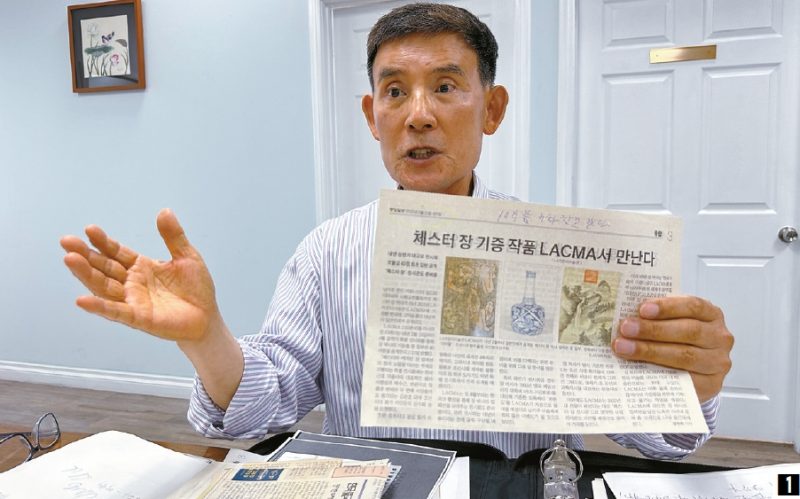The Los Angeles County Museum of Art (LACMA) is facing renewed controversy over the provenance of several pieces donated by Chester Chang, including Lee Jung-seob’s “Children Playing on a Pole.” The legitimacy of these acquisitions has been called into question by a Korean-American collector.
Chang is accused by Changki Baek, a 68-year-old collector, of intimidating him into surrendering the art works more than 20 years ago. According to Baek, Chang obtained several valuable items from him through intimidation.
Among these pieces, “Children Playing on a Pole,” which was displayed during the recent “Korean Treasures From The Chester And Cameron Chang Collection” exhibition that concluded in June, has been particularly controversial due to allegations of forgery. As concerns about the authenticity of the artwork grow, questions about the process by which Chang acquired his collection have also intensified.

In a recent interview at his office on Wilshire Boulevard, Baek presented photos, contracts, and other records from a transaction with Chang in 2002, expressing frustration over the ordeal. Baek explained that he sold three items to Chang at the time, including “Children Playing on a Pole” and two ceramics, for $25,000.
However, Baek claimed that Chang later harassed him, accusing him of dealing in stolen goods and demanding a refund, while ultimately refusing to return the artworks.
Baek provided written documentation to support his claims, including a handwritten contract dated August 12, 2002, which contains both his and Chang’s signatures.
Chang, however, has categorically denied Baek’s allegations. In an August interview, Chang stated that he did not purchase “Children Playing on a Pole” from Baek but rather acquired it from a friend in Korea many years ago. When asked about the contract, Chang replied that it had been so long that he could not recall where the contract was stored.
Chang also insisted that he bought only a single ceramic piece from Baek for $42,000, and explained that the sale was under special conditions due to his mother’s dementia.
According to Chang, the deal allowed his mother to change her mind and return the item for a refund. He acknowledged that he didn’t fully pay for the item but rejected claims that Baek had refunded any money. Instead, Chang asserted that he attempted to sell other items on consignment to cover the remaining amount but was unable to do so.
In response to Baek’s accusations, Chang remarked, “How does it make sense for only one party to have a contract?” and denied ever receiving any contracts from Baek.
Despite these conflicting claims, the key issue lies in whether the museum sufficiently verified the provenance of the items donated by Chang. With allegations of forgery surrounding some of the artworks in the “Korean Treasures” exhibition, there is a growing demand for a thorough review of LACMA’s process for vetting donations.
The debate surrounding the authenticity and origins of Chang’s donated artworks raises serious questions about the museum’s ethical responsibilities. Proceeding with the exhibition without thoroughly confirming the provenance of these donations has cast doubt on its curatorial practices, with potential long-term consequences for future exhibitions and collection management.
LACMA has not yet responded to repeated inquiries regarding these concerns, despite announcing its intention to continue with publication plans related to the contested works. For Chang’s donations to be recognized as historically significant, rigorous verification of their authenticity and origin is necessary, and the museum must address these concerns with transparency and care.
By Mooyoung Lee [lee.mooyoung@koreadaily.com]


![Deeper-I, Efinix sign deal to develop world’s first AI-FPGA single-chip solution Ikuo Nakanishi, left, vice president of sales at Efinix and Lee Sanghun, right, CEO of Deep-I pose for a photo after signing MOU on March 26. [Provided by Deeper-I]](https://www.koreadailyus.com/wp-content/uploads/2025/04/0401-DeeperI-100x70.png)

